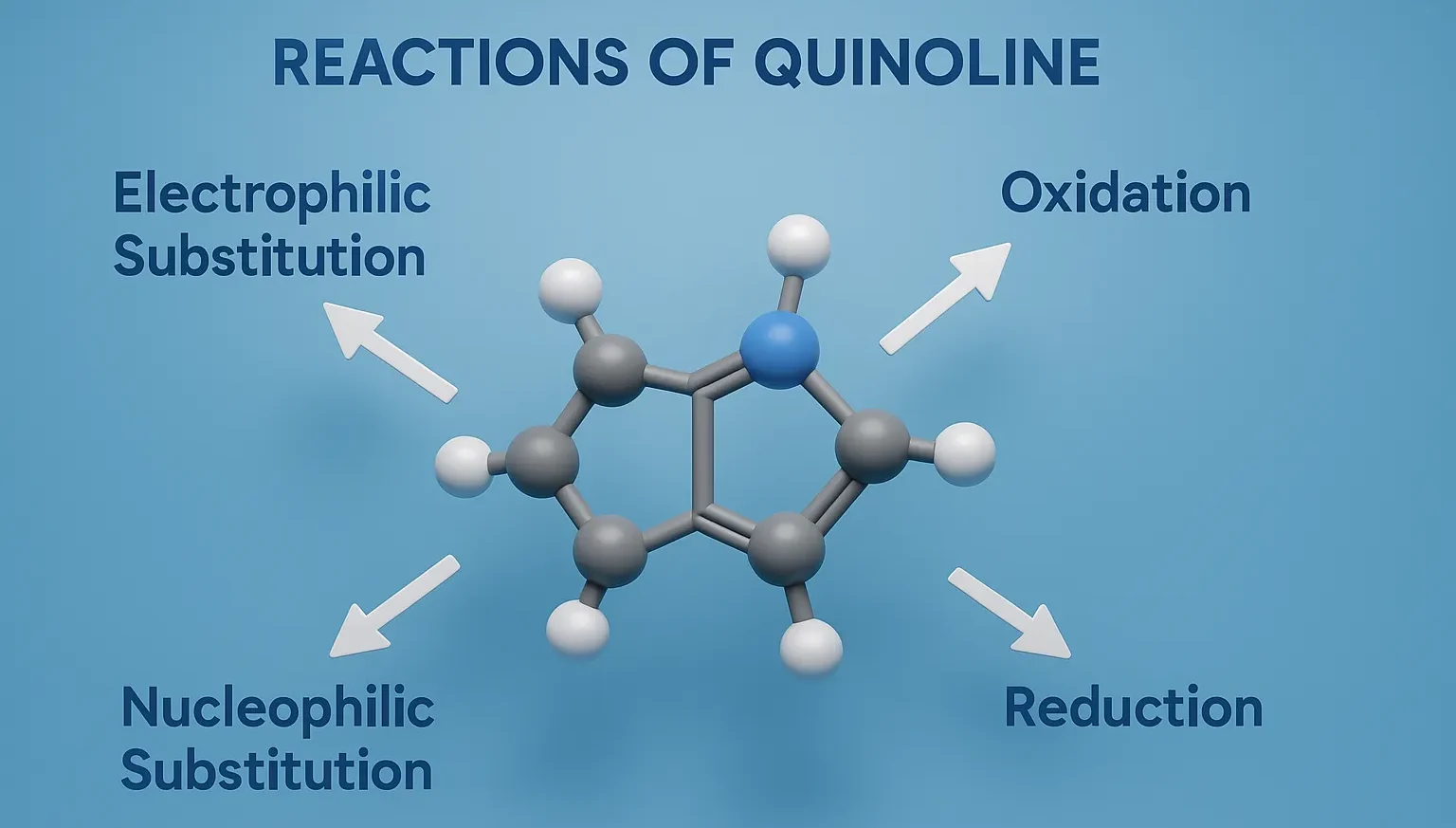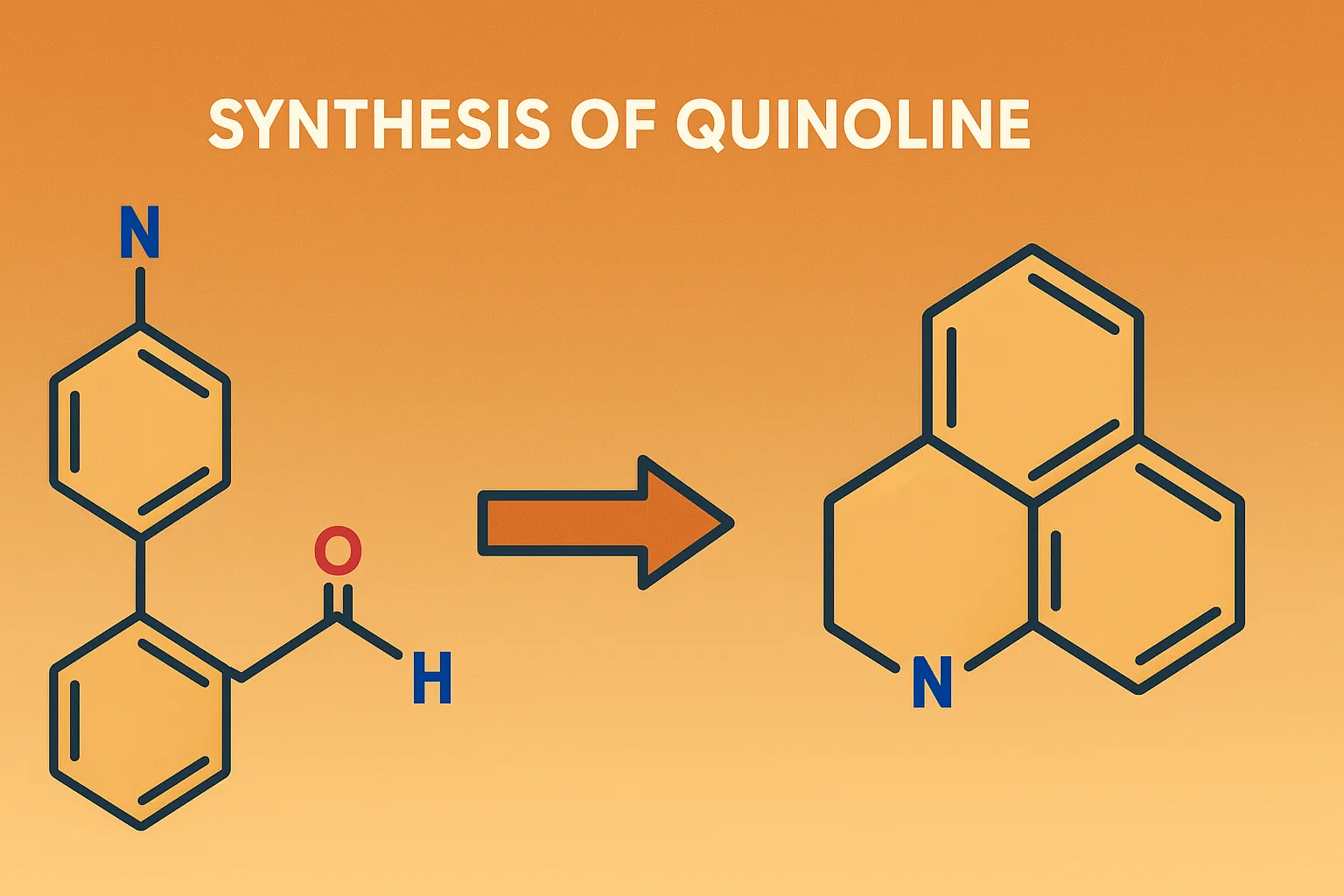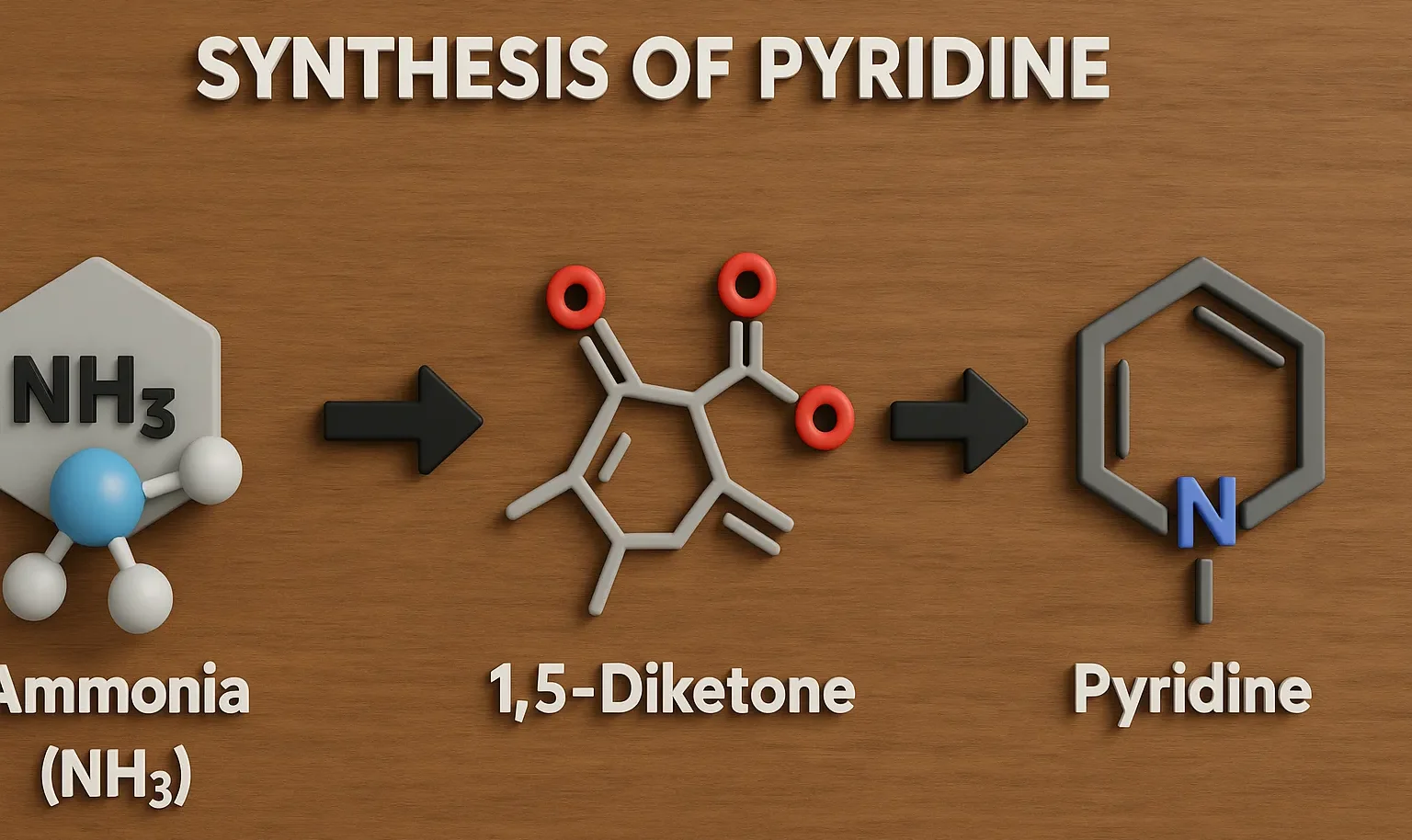Reactions of Quinoline
Reactions of Quinoline involve electrophilic substitution, nucleophilic substitution, oxidation, and reduction crucial in drug development. Reactions of Quinoline Electrophilic Substitution (EAS) Preferred Sites: C-5 and C-8 on the benzene ring (electron-rich) C-3 and C-4 are deactivated Typical Reactions: Nitration (mild): C-5 or C-8 Sulfonation: C-5 or C-8 Halogenation: Br₂ or Cl₂ at benzene ring positions … Read more










